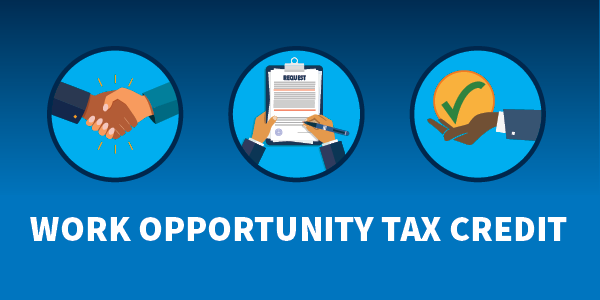Many employers are struggling to extend investments in technology and personnel that would promote the future growth of their business due to the high cost of taxes. To reduce their tax exposure, they can take advantage of the Work Opportunity Tax Credit (WOTC).
This article covers what the WOTC is, how the program works, the advantages, and what is required to qualify. Once you have read this, you will have the knowledge to make a claim for the WOTC to lessen your tax burden in the future.
What is WOTC?
The Work Opportunity Tax Credit (WOTC) is a joint venture between the Internal Revenue Service and the Department of Labor. It offers a tax credit on wages paid to qualified persons who commence work prior to December 31, 2025, and who have been certified by a local agency (often referred to as a state workforce agency) as belonging to one of the 10 WOTC target groups. These people have been categorised as having substantial impediments to employment, such as:
- Qualified veterans
- Qualified IV-A recipients of state programs for needy families with children
- TANF recipients
- SNAP (food stamp) recipients
- Designated community residents
- Vocational rehabilitations referral
- Ex-felons
- Supplemental security income (SSI) recipients
- Summer youth employees in empowerment zones
- Qualified long-term unemployment recipients
The Taxpayer Certainty and Disaster Tax Relief Act of 2020 extended the WOTC past its planned deadline of 2020, taking it all the way to the end of 2025.
What are the benefits of the Work Opportunity Tax Credit program?
The WOTC program can offer considerable economic gains to many businesses due to the tax deductions it provides. There is no restriction on the quantity of qualified workers that can be hired or the amount of credits that can be claimed. This means that employers are able to reduce their federal tax liability by targeting particular job seekers.
How does the WOTC program work?
To claim the tax credit, you must first satisfy the requirements of the WOTC program. To do this, both you and the job applicant must complete two forms which contain the information needed by the state workforce agency to decide if the applicant is part of a target group that qualifies for the WOTC. These forms are:
- Form 8850: is a pre-screening document that needs to be completed by both the employer and their prospective employee before or at the time of offering employment. The employee provides details about their eligibility on the first page, while the employer fills out the second page.
- DOL Form 9061:also known as the Individual Characteristics Form, is used in conjunction with Form 8850 to collect information necessary for requesting certification. The applicant completes the form and the employer verifies the identification documents they submit. In some cases, an applicant may have a pre-screened Conditional Certification DOL Form 9062 from a state workforce agency which can be used instead of Form 9061.
Once the hiring process is finished and the employee is on board, you must send the documents to your local workforce or employment agency. The deadline for submitting these forms is 28 days following the employee’s first day of work. Upon receipt, the state agency will assess the worker’s qualification for the credit and notify you.
How is the WOTC calculated?
Generally, the Work Opportunity Tax Credit (WOTC) is a 40% tax break of up to $6,000 of wages paid to a person who:-
- has just started work;
- is identified as a member of a specific group; and
- completes a minimum of 400 hours of service for the employer.
Consequently, the highest amount of the tax credit is typically $2,400.
It is important to note that even if the employee works fewer than 400 hours, the credit can still be claimed, but at a reduced rate of 25%.
In the case of qualified veterans, the maximum credit calculation is different and could result in more savings. That being said, up to $24,000 in wages can be taken into consideration when calculating WOTC for veterans with a disability related to their service, and the maximum credit is $9,600.
How do I claim the Work Opportunity Tax Credit?
Upon being declared eligible by your state agency, you will receive a certification letter. Taxable employers then need to complete Form 5884 Work Opportunity Credit while tax-exempt organizations will have to fill out Form 5884-C when they hire a qualified veteran. You have to total the wages of all qualified employees and then multiply the figures with their working hours and the right percentage. Additionally, Form 5884 values must be included on Form 3800 to claim the credit against your income tax. Both of these documents must be submitted to the IRS alongside your annual tax filing.
It would be prudent to keep a copy of the forms and the supporting evidence given to your state workforce agency, and to record the hours worked by qualified personnel in case of an IRS review of the credits declared.
Bottom Line
If your organization doesn’t have a strategy or could use additional guidance, a good first step is to understand what’s involved in creating a hiring process for your business.
SW HR Consulting has been helping companies to build their teams and values for over 10 years. Contact us to find out more about our unique hr outsourcing services and see how our expertise can benefit you.







